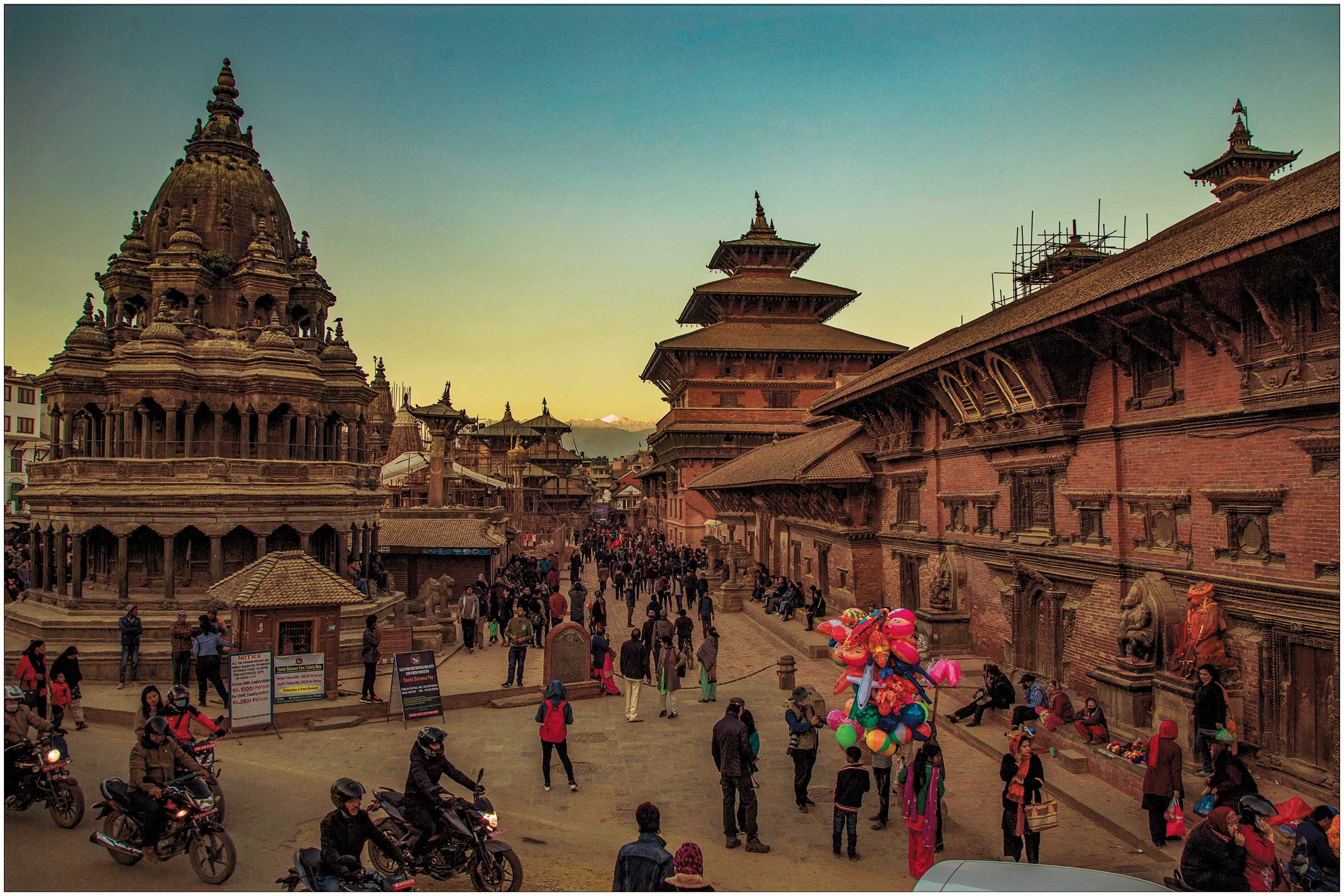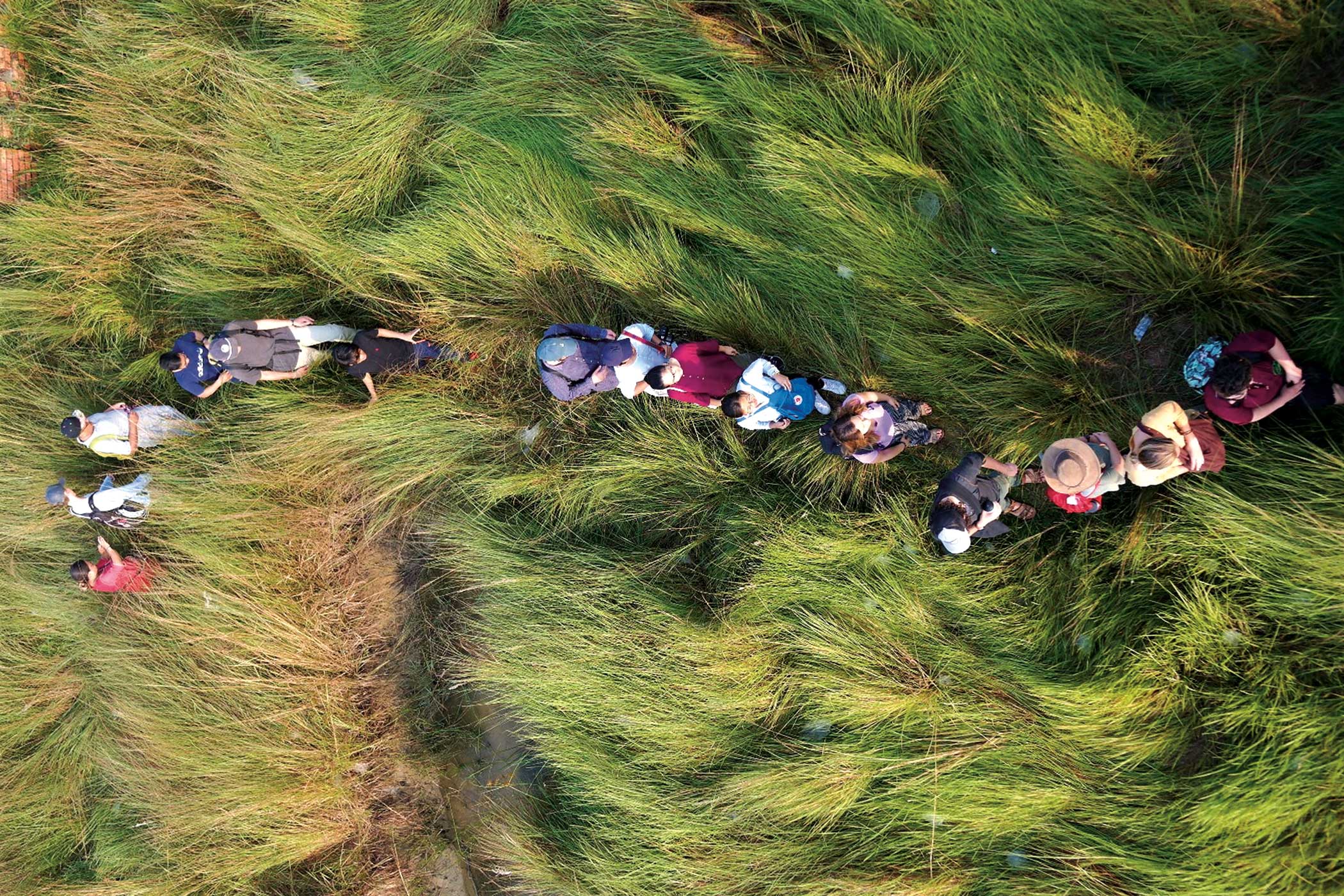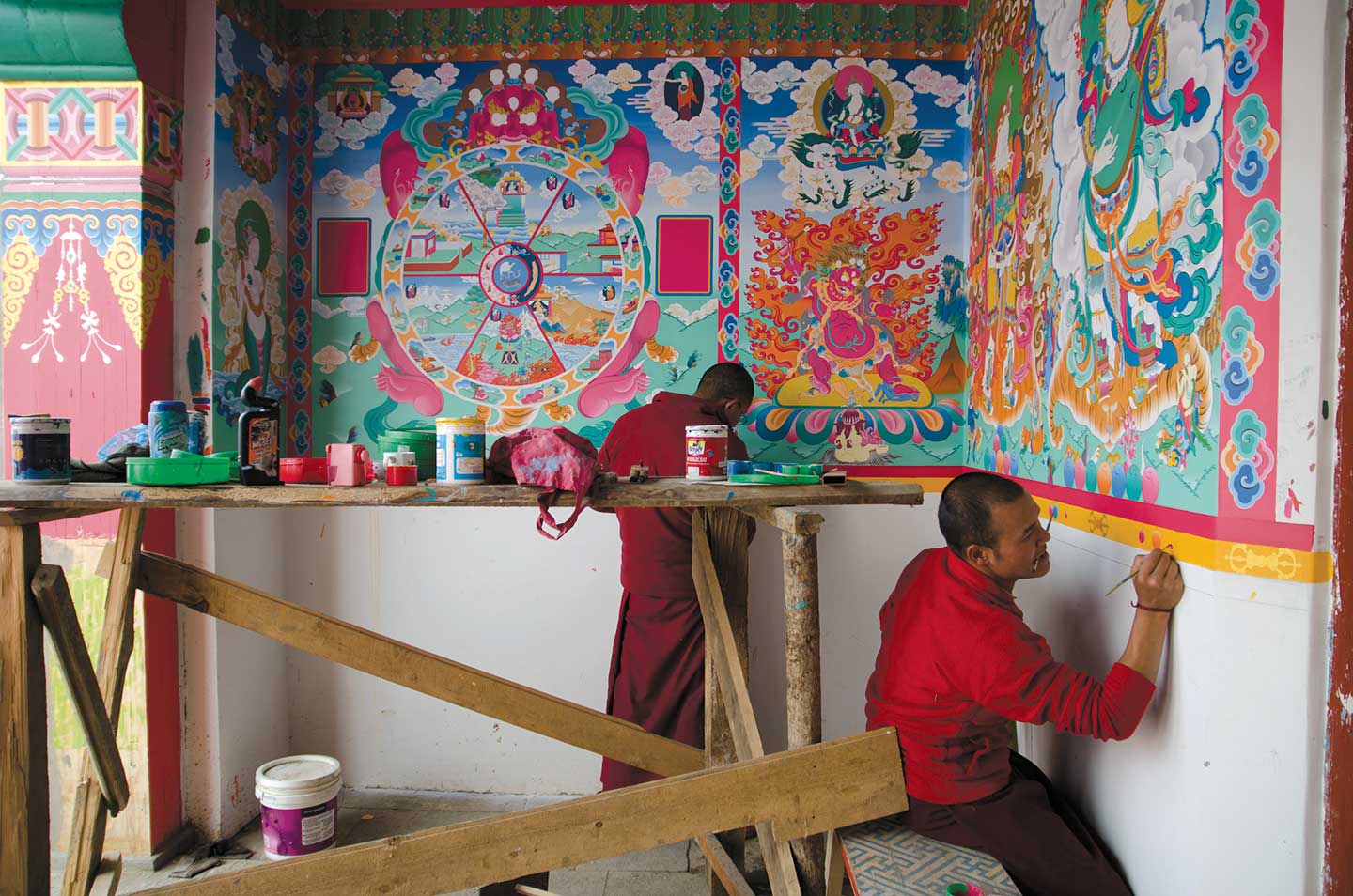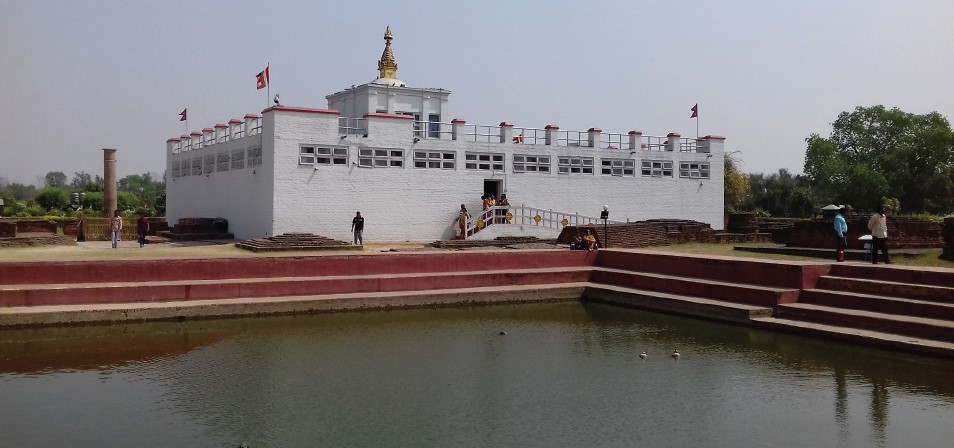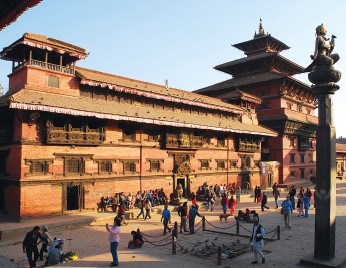One of the holiest pilgrimage sites of Buddhism in Nepal is the ideal place to pursue spiritual ends.
Sleep, His Holiness the Fourteenth Dalai Lama sometimes says, is the best form of meditation. And it was this particular form of meditation that my body showed a great inclination towards at the Namo Buddha Monastery. The steady murmur of chants uttered in unison and the occasional thud of a drum reverberating in the monastery calmed my mind. The body, tired after an uphill walk to the monastery, was even more receptive to the languor. My companion, unable to resist the balmy sunshine and the silence, stretched out on a bench, and fell asleep. Little monks jostled with each other as they climbed the stairs to the main monastery. As soon as they reached the main entrance to the big hall, they suddenly turned demure. The place had different effect on different people. I fell into a sweet slumber.
 Namo Buddha, the site where a prince is believed to have resuscitated a starving tigress and her cubs by feeding them his own flesh, is one of the holiest pilgrimage sites for Buddhists. According to legend, after the prince was devoured by the tigress travelers passing through the area felt threatened by wild animals. They took to chanting “Namo Buddhaya” (“I take refuge in the Buddha”) to control their fears. In time the place came to be known as Namo Buddha.
Namo Buddha, the site where a prince is believed to have resuscitated a starving tigress and her cubs by feeding them his own flesh, is one of the holiest pilgrimage sites for Buddhists. According to legend, after the prince was devoured by the tigress travelers passing through the area felt threatened by wild animals. They took to chanting “Namo Buddhaya” (“I take refuge in the Buddha”) to control their fears. In time the place came to be known as Namo Buddha.
The secluded location and the spiritual element imparted by the monastery at Namo Buddha have a soothing effect on the mind. It is a favorite with the devout and the agnostic, the religious and the secular, with seekers of recreation as well as spirituality. The view from the monastery’s high perch is similar to what many thangka paintings depict—snow-capped mountains, lush valleys, successive rows of hills, terraces full of crops and quaint villages.
The highlight of the daily events at the monastery is the prayer session. It is a powerful experience. The recitation of the mantras, in the classic guttural tone of Tibetan Buddhism, is gripping. Equally gratifying is the scorched tea that monks serve in earthen cups. The prayer session is, even if only for a brief moment, hypnotic. You are awed by the concentration and spiritual stamina of the participants. The website of the Thrangu Tashi Yangtse Monastery extols Namo Buddha as a place that ‘inspires one’s faith; renunciation and weariness with samsara naturally arise’.
For some the peaceful surroundings of Namo Buddha must stimulate a longing for the spiritual life of a monk. But for those who haven’t the ability or desire to renounce the world for a considerable period of time, it is a wonderful place to forget about the world for a few hours.



